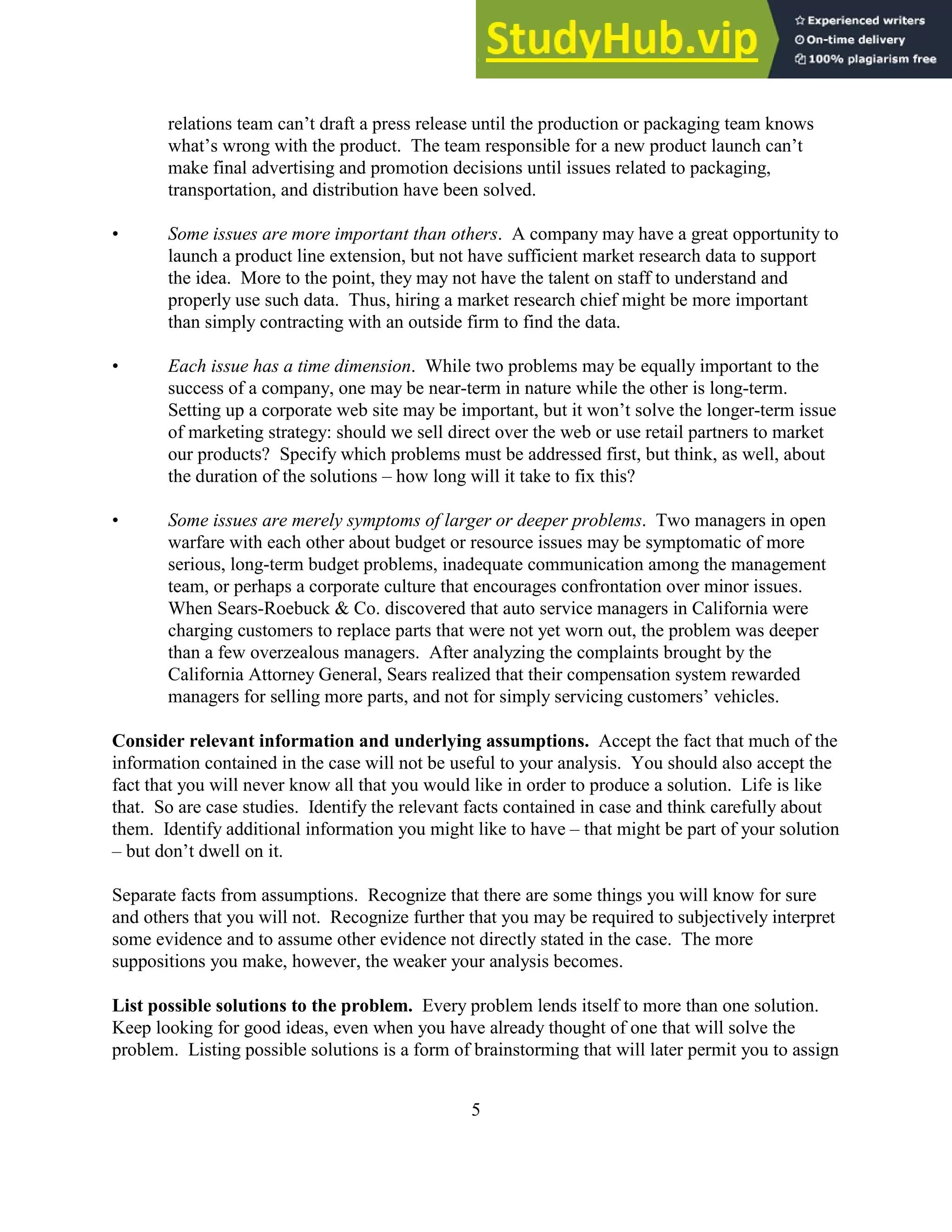This document provides an overview of analyzing case studies in business education. It discusses the increasing popularity of using case studies to teach complex modern business problems beyond fundamentals. Case studies allow students to assume the role of a manager in an authentic business situation. The document then describes the three main types of case studies: field cases written with company cooperation; library cases using public records; and fictional armchair cases. It emphasizes the importance of carefully reading case studies multiple times and taking detailed notes to fully understand the situation before developing a solution.







